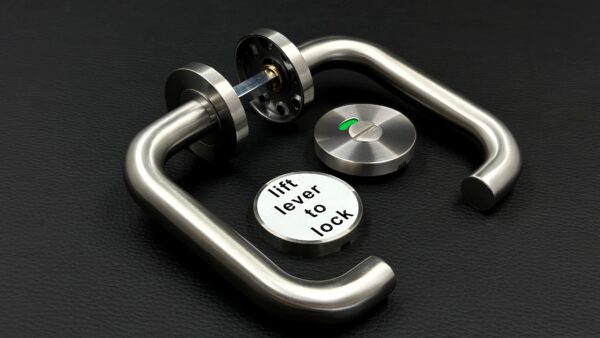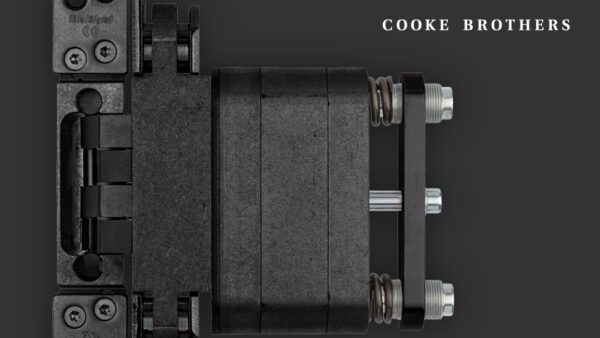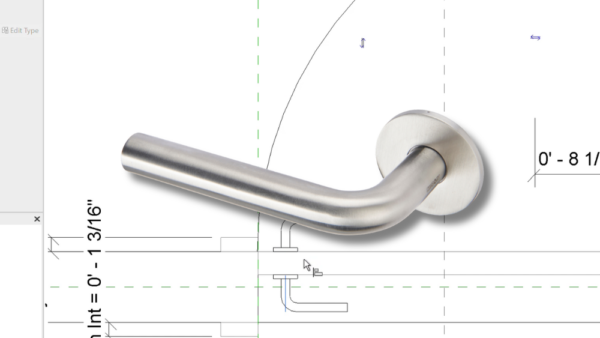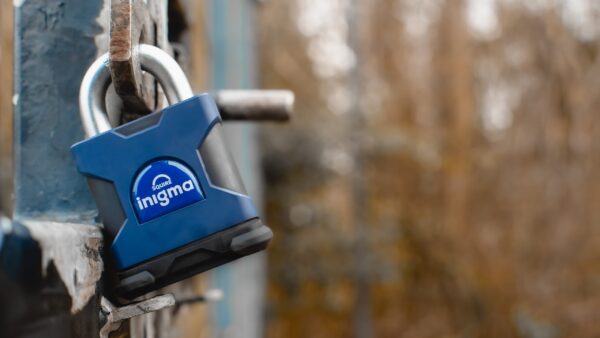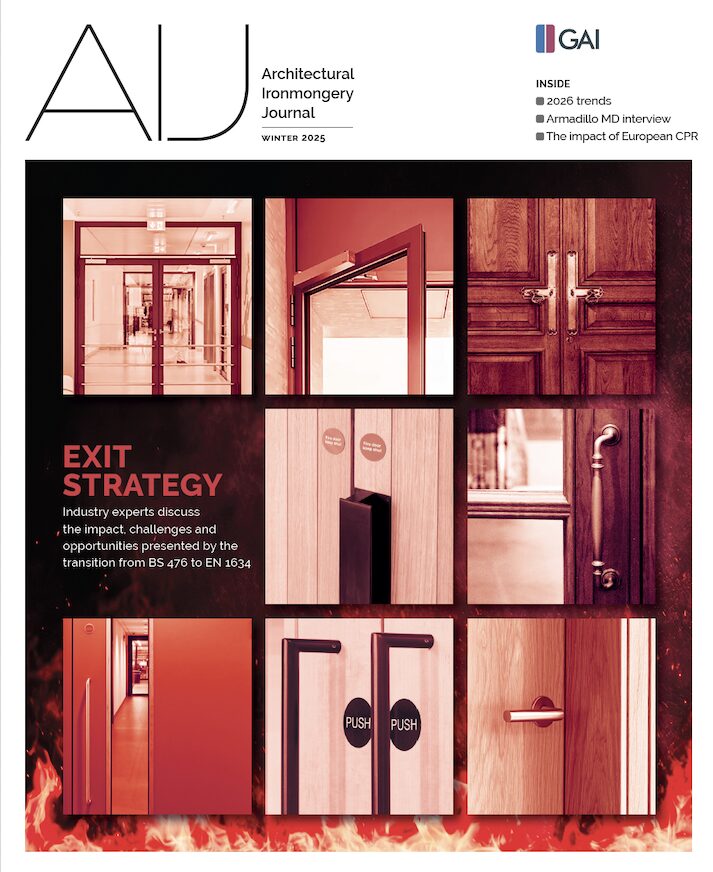Architect and designer Jonathan Yeung on how hardware choices directly shape how we engage and experience architecture.
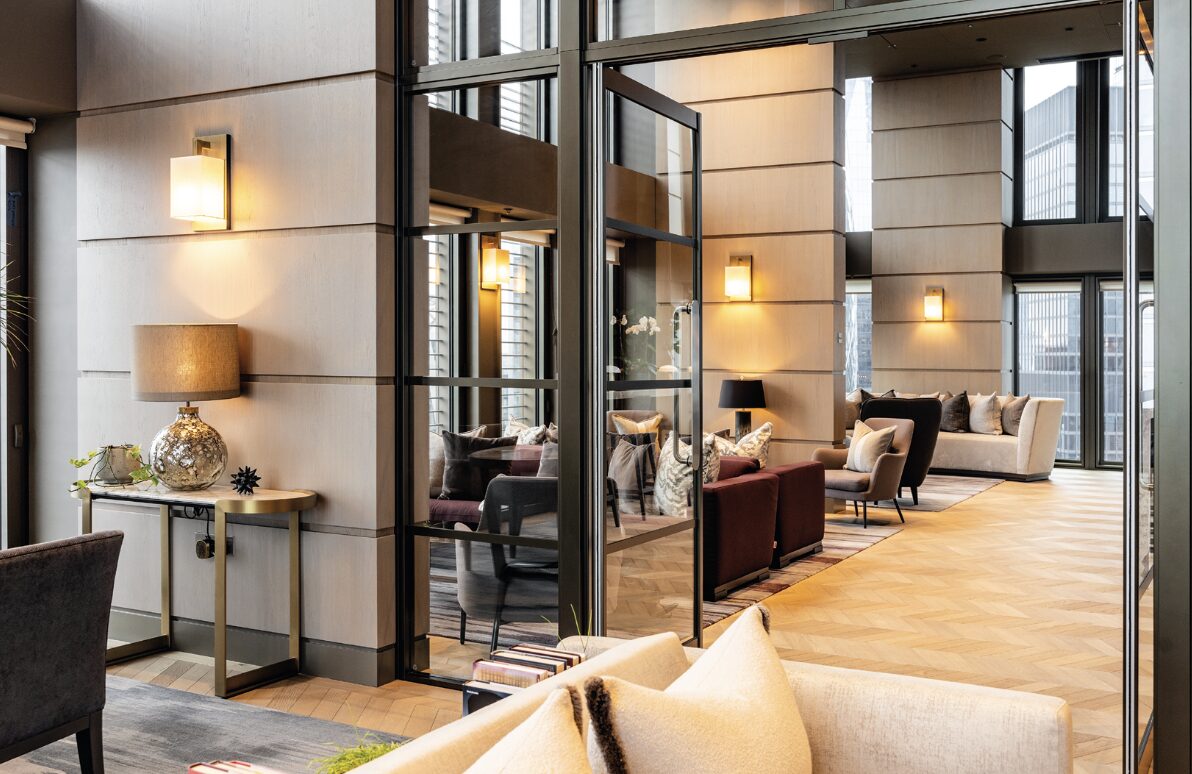
Juhani Pallasmaa famously stated, “The door handle is the handshake of the building.” The hardware of a door – its movable parts – directly shapes how we engage with architecture, influencing our sensory and spatial awareness. Rather than focusing solely on the materiality, finishes, or stylistic variations of knobs and handles, the emphasis lies in how different types of hardware impact spatial flow and user experience. By examining hinges, tracks, and pivots, designers can better understand the nuanced ways in which these elements contribute to an architectural narrative.
The selection of door hardware is not always as flexible as one might assume – certain hinges or track systems may be unsuitable for specific spatial conditions, and environmental factors such as humidity can affect natural materials like wood. Small yet critical, these components play a defining role in shaping the perception and function of architectural spaces.
Side hinges are among the most commonly used door hardware, as swing doors are typically assumed to operate with this mechanism. They primarily fall into two categories: exposed butt hinges and concealed side hinges. One key limitation of side hinges is the requirement for a door frame, regardless of the intended aesthetic. In rare cases where side hinges are installed without a frame, the wall opening must be precisely prepared, and the material must be substantial enough to anchor the hinges and support the door.
Butt hinges are widely used due to their ease of installation, adjustability, and maintenance. Typically mounted face-to-face on both the door frame and the side profile of the door, they require minimal preparation and can be replaced or adjusted with little effort. Their practicality makes them a standard choice for many applications. In some cases, specially finished butt hinges with refined details can serve as an elegant design solution, particularly for larger doors. However, on smaller doors, their visibility on the pull-side may be visually distracting.
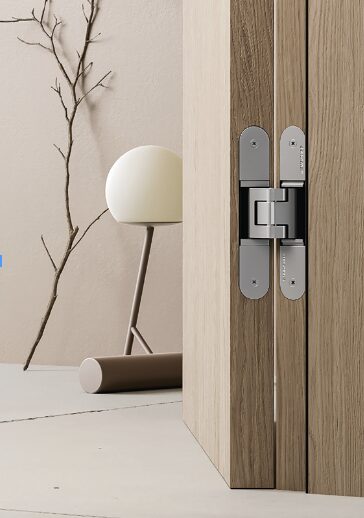
Concealed side hinges, produced by various brands, function similarly and have gained popularity as installation tools and market demand have matured. As the name suggests, these hinges are embedded within both the door and frame, remaining completely hidden when the door is closed. However, they do become visible when the door is open. This means they are best suited for doors that remain closed most of the time, as their primary advantage is creating a clean, uninterrupted surface.
Concealed hinges enable the design of flush swing doors, allowing for minimalistic detailing that emphasises the architectural opening. However, they are more challenging to install and service, as they require precisely shaped cutouts in both the door and frame. Once installed, swapping them for a different hinge type is difficult, as the custom recesses limit compatibility. The thickness and core material of the door must also be carefully calibrated to ensure proper structural support. Despite these complexities, the results can be striking – concealed hinges allow doors to integrate seamlessly into their surroundings, enhancing the overall spatial composition.
Pivotal role
Pivot hinges are most commonly encountered in commercial glass doors, especially those without a mullion frame, as they rely on top (ceiling and/or wall) and bottom (floor) anchoring. However, beyond their traditional application in glass doors, pivot hinges are gaining popularity for their versatility and ability to create a seamless, unobstructed opening. Unlike side hinges, which restrict movement to one edge of the door, pivot hinges can be placed anywhere along the door’s width – even at its centre – allowing designers to experiment with balance, proportion, and the creation of strikingly large doors.
Despite their aesthetic and functional advantages, pivot hinges require a more complex installation and demand careful planning early in the design process. Similar to concealed side hinges, pivot hinges require precise cutouts – but instead of fitting into a door frame, they must be embedded into the floor slab and ceiling structure or strategically positioned within a dropped ceiling.
Despite these challenges, pivot hinges remain highly desirable in high-end projects. Their ability to create a seamless aesthetic – regardless of whether the door is open or closed – enhances their appeal, allowing doors to blend into the architecture with an almost sculptural presence. By integrating the pivot mechanism within the structure, these doors behave like living machines, embodying a fusion of precision engineering and architectural elegance.
Jonathan Yeung is designer (architecture and interior), founding partner of YY Projects. He is also a lecturer at the University of Hong Kong and the Technological and Higher Education Institute of Hong Kong. This is an abridged version of an article that first appeared in Archdaily.
An online quiz based on this feature is available on the GAI Learning Hub.
Completion of this quiz is worth one CPD point towards Registered Professional status. learninghub.gai.org.uk/totara/dashboard/index.php


